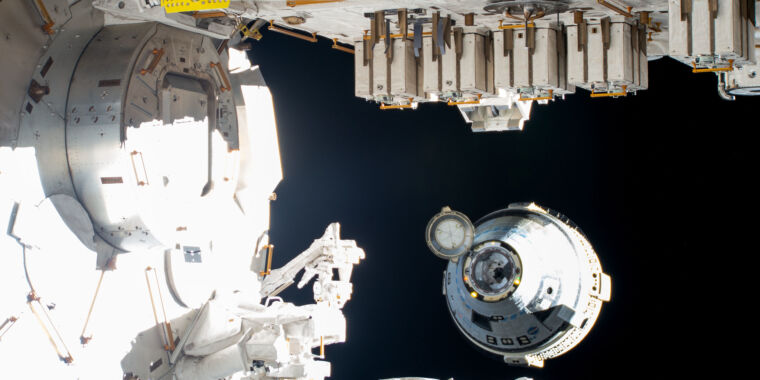The future of Boeing’s crewed spaceflight program is muddy after Starliner’s return

NASA
Nearly a decade ago to the day, I stood in the international terminal of Houston’s main airport checking my phone. As I wanted to board a flight for Moscow, an announcement from NASA was imminent, with the agency due to make its selections for private companies that would transport astronauts to the International Space Station.
Then, just before boarding the direct flight to Moscow, a news release from NASA popped into my inbox about its Commercial Crew Program. The space agency, under a fixed price agreement, agreed to pay Boeing $4.2 billion to develop the Starliner spacecraft; SpaceX would receive $2.6 billion for the development of its Crew Dragon vehicle.
At the time, the Space Shuttle had been retired for three years, and NASA’s astronauts had to fly to the International Space Station aboard the Soyuz spacecraft. “Today, we are one step closer to launching our astronauts from US soil on American spacecraft and ending the nation’s sole reliance on Russia by 2017,” NASA Administrator Charles Bolden said in the release.
I knew this only too well. As the space reporter for the Houston Chronicle, I was traveling with NASA officials to Russia to visit Star City, where astronauts train, and see Roscosmos’ mission control facilities. From there, we flew to Kazakhstan to tour the spaceport in Baikonur and observe the launch of the Expedition 41 crew to the space station. The mission included two Russian astronauts and NASA’s Butch Wilmore. I wrote about this as the fifth part of my Adrift series on the state of America’s space program.
A decade later, it all seems surreal. I cannot imagine, as I did a decade ago, standing near soldiers in Moscow watching a “Peace March” of thousands of protestors through the Russian capital city. There is no room for dissent in Russia today. The airport we used to fly from Moscow to Kazakhstan, Domodedovo, has been attacked by Ukrainian drones. I almost certainly can never go back to Russia, especially after being branded a ‘war criminal’ by the country’s space boss.
But history turns in interesting ways. Ten years after his Soyuz flight from Kazakhstan, Wilmore launched from Florida on Boeing’s Starliner spacecraft. Last weekend, this Boeing spacecraft came back to Earth without Wilmore and his copilot Suni Williams on board. Here we were once again: Wilmore flying in space and me thinking and writing about the future of NASA’s human spaceflight programs.
I couldn’t help but wonder: After all that happened in the last decade, has the Commercial Crew Program been a success?
Boeing becomes a no-show
Commercial Crew was a bold bet by NASA that won the space agency many critics. Could private companies really step up and provide a service that only nations had before?
NASA’s two selections, Boeing and SpaceX, did not make that 2017 target for their initial crewed flights. For a few years, Congress lagged in funding the program, and during the second half of the 2010s, each of the companies ran into significant technical problems. SpaceX overcame serious issues with its parachutes and an exploding spacecraft in 2019 to triumphantly reach orbit in the summer of 2020 with its Demo-2 mission, flying NASA astronauts Doug Hurley and Bob Behnken to and from the space station.
Since then, SpaceX has completed seven operational missions to the station, carrying astronauts from the United States, Europe, Japan, Russia, the Middle East, and elsewhere into orbit. A crew from the eighth mission is on the station right now, and the ninth Crew Dragon mission will launch later this month to bring Wilmore and Williams back to Earth. Crew Dragon has been nothing short of a smashing success for SpaceX and the United States, establishing a vital lifeline at a time when—amid deteriorating relations between America and Russia—NASA reliance on Soyuz likely would have been untenable.
Starliner has faced a more difficult road. Its first uncrewed test flight in late 2019 was cut short early after serious software problems. Afterward, NASA designated the flight as a “high visibility close call” and said Boeing would need to fly a second uncrewed test flight. This mission in 2022 was more successful, but lingering concerns and issues with flammable tape and parachutes delayed the first crew flight until June of this year. The fate of Starliner’s third flight this summer, and its intermittently failing thrusters that ultimately led to its crew needing an alternative ride back to Earth, has been well documented.
Source link



